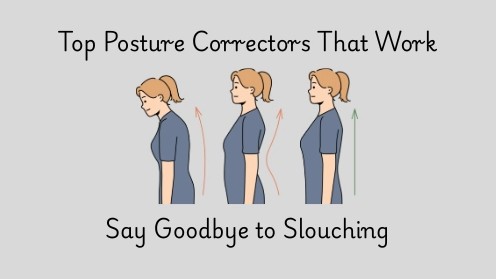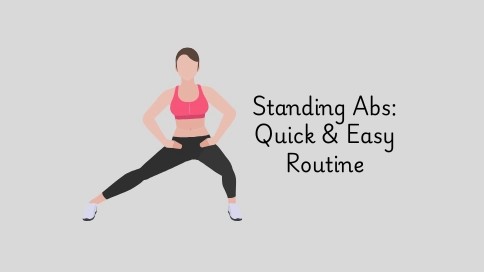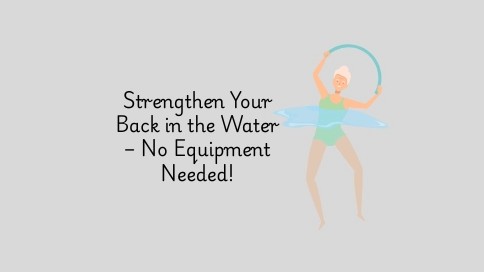Introduction: Why Good Posture Matters More Than You Think
Poor posture is more than just a cosmetic issue—it can lead to chronic pain, fatigue, decreased lung function, poor digestion, and even reduced confidence. In today’s digital world, with long hours at desks and constant screen time, maintaining proper posture has become a real challenge.
That’s where posture correctors come in. They aren’t magic fixes, but when used correctly, they’re powerful tools for training your body to maintain healthy alignment. Whether you’re struggling with back pain, shoulder tension, or just want to improve your posture and appearance, posture correctors offer practical support that works over time.
What Is a Posture Corrector and How Does It Work?
A posture corrector is a wearable device designed to help align your shoulders, back, and spine. It encourages a neutral spine position by gently pulling your shoulders back and supporting your upper or lower back. Some posture correctors are simple elastic braces, while others are high-tech devices that vibrate to remind you when you slouch.
Most posture correctors work by increasing your awareness. When your shoulders round forward or your back begins to slump, the corrector creates gentle resistance or a reminder to adjust. Over time, your body develops muscle memory, so even without the device, your posture improves naturally.
Who Should Use a Posture Corrector?
Posture correctors are beneficial for people of all ages and fitness levels. You might benefit if:
You sit at a desk for long hours
You suffer from frequent back, neck, or shoulder pain
You notice yourself slouching when walking or standing
You’ve had a recent injury affecting your posture
You want to enhance your physical presence and confidence
They’re also great for athletes, students, seniors, and remote workers who want to stay active and aligned throughout the day.
Types of Posture Correctors
There isn’t a one-size-fits-all solution. Posture correctors come in different forms, and each type serves a unique purpose depending on your needs.
1. Shoulder Braces
These are the most common and simplest type. They wrap around the shoulders and pull them gently back to prevent rounding. They’re ideal for people with desk jobs or mild posture issues.
2. Back Braces
These offer more comprehensive support by covering the upper and lower back. They’re bulkier than shoulder braces but better for chronic pain or injury recovery.
3. Posture Shirts
Posture-correcting shirts look like regular activewear but contain built-in tension panels that help support good alignment. They're discreet and often preferred by athletes or people who want support without straps or hardware.
4. Smart Posture Devices
These modern gadgets attach to your back or clip onto your clothing. When you begin to slouch, they vibrate as a reminder to straighten up. Many sync with mobile apps to track your posture habits.
5. Lumbar Support Belts
Designed for lower back support, these are often used during physical work or lifting. They’re great for those dealing with lower back discomfort or sciatica.
Key Benefits of Using a Posture Corrector
Using a posture corrector consistently, even for a short time daily, can lead to noticeable improvements. Here’s how they can help:
1. Pain Relief
Poor posture strains muscles, ligaments, and joints—leading to chronic pain. Correctors help distribute weight evenly, reducing stress and discomfort in the back, neck, and shoulders.
2. Muscle Retraining
They don’t just hold your body up—they train your muscles to do it on their own. Over time, you’ll find yourself sitting or standing straighter even without wearing the device.
3. Improved Appearance
A straight, aligned posture can make you look taller, slimmer, and more confident. It improves your physical presence and boosts your self-esteem.
4. Better Breathing
Slouching compresses your lungs and diaphragm. Correct posture opens up the chest, allowing deeper, more effective breathing and better oxygenation.
5. Enhanced Mobility
When your spine is properly aligned, movement becomes smoother and more efficient. This can lead to better performance in workouts and daily activities.
How to Choose the Best Posture Corrector
With so many options available, it’s important to pick a posture corrector that fits your lifestyle and needs. Here's what to keep in mind:
Comfort and Material
Choose a device that’s soft, breathable, and skin-friendly. If it’s uncomfortable, you’re less likely to wear it regularly.
Adjustability
Everyone’s body is different. Look for adjustable straps or bands that allow a personalized fit and proper support without cutting into your skin.
Ease of Use
It should be easy to wear, remove, and adjust. Complicated designs often end up sitting in a drawer unused.
Support Level
Decide if you need basic shoulder correction, full back support, or tech-assisted monitoring. Beginners may start with lightweight shoulder braces, while people with chronic pain might benefit from full braces.
Discreetness
If you plan to wear your posture corrector under clothing at work or in public, choose one that’s slim and low-profile.
Most Effective Posture Correctors (Evergreen Picks)
Here are some of the most widely recommended posture correctors that continue to be effective and popular across time:
1. Upright GO (All Versions)
A smart wearable device that vibrates when you slouch and syncs with an app to track progress. Great for building awareness and developing long-term habits.
2. Truweo Posture Corrector
A budget-friendly and beginner-friendly option with adjustable straps. It’s lightweight, easy to wear under clothes, and ideal for desk workers.
3. ComfyBrace Support Brace
Provides firm support across the upper back and shoulders. Suitable for people recovering from injuries or managing chronic pain.
4. PostureMedic Posture Trainer
This flexible resistance band device can be worn as a brace or used as an exercise tool. It promotes active engagement of muscles.
5. BackEmbrace Posture Support Bra
Perfect for women who want daily posture support combined with the comfort of a bra. It helps align shoulders without sacrificing fit or style.
6. AlignMed Posture Shirt
Used by athletes and recommended by physical therapists, this high-tech shirt uses tension bands to support posture while keeping you mobile.
Posture Corrector Alternatives and Supplements
While posture correctors are helpful, they work best when paired with healthy habits and movement. Consider adding these alternatives to your routine:
1. Yoga and Pilates
These disciplines strengthen your core and improve body awareness. Poses like the Cobra, Cat-Cow, and Child’s Pose help stretch tight areas and realign your spine.
2. Stretching and Mobility Drills
Daily stretching—especially for your chest, shoulders, and neck—can reduce tightness and improve alignment. Try doorway stretches, thoracic extensions, and neck rolls.
3. Core and Back Strengthening
Strong muscles support your spine. Planks, bridges, and rows can help build the strength needed to maintain proper posture naturally.
4. Foam Rolling
Rolling your upper back and chest can relieve tension and improve flexibility. It’s a simple and effective tool to counteract sitting-related stiffness.
5. Ergonomic Workspaces
Your desk setup can make or break your posture. Use a chair with lumbar support, keep screens at eye level, and ensure your feet are flat on the floor.
How to Use a Posture Corrector Effectively
Getting results from a posture corrector takes more than just strapping it on. Here's how to make the most of it:
Start slow: Wear it for 15–30 minutes daily and increase gradually. Let your body adapt to the new alignment.
Be consistent: Daily use builds muscle memory. Skipping days reduces progress.
Pair with movement: Stretching and strength training maximize results.
Avoid all-day use: Your muscles can become reliant on support. Use it to train—not to replace—your body’s natural function.
Listen to your body: If you feel discomfort, adjust the fit or try a different style.
Common Mistakes to Avoid
Even the best posture correctors won’t work if you misuse them. Watch out for these common errors:
Wearing it too tight: This can cut off circulation or cause discomfort.
Overuse: Wearing a posture corrector all day can weaken muscles instead of strengthening them.
Neglecting exercises: A posture corrector is a tool, not a cure. Strengthening and stretching are essential.
Ignoring body cues: Pain, numbness, or pinching is a sign the device is either too tight or not suited for your body type.
Buying the wrong type: Don’t choose based on looks or price alone. Consider your specific posture issues and daily habits.
Final Thoughts
Using one of the best posture correctors can dramatically improve how you feel, move, and carry yourself. Whether you’re managing discomfort, rebuilding strength after injury, or simply trying to look and feel better, a posture corrector can be a powerful ally.
But remember: posture is a practice, not a one-time fix. Real improvement comes from daily awareness, smart tools, and strengthening your body from the inside out.
Investing in your posture is investing in your long-term health. With the right tools, knowledge, and commitment, you can stand tall, breathe deeper, and live pain-free—no matter where you’re starting from.
FAQs
1. What is the best posture corrector for everyday use?
The best posture corrector for daily use is one that’s comfortable, adjustable, and discreet—like the Truweo Posture Corrector or a smart trainer like Upright GO. These can be worn under clothing and provide consistent support without discomfort.
2. Can posture correctors fix slouching permanently?
Posture correctors help train your muscles, but they must be paired with stretching and strength-building exercises to see long-lasting, permanent improvement.
3. How long should I wear a posture corrector each day?
Start with 15 to 30 minutes per day and gradually increase to 1–2 hours. It’s best used as a training tool—not a full-time support system.
4. Are smart posture correctors worth it?
Yes, smart correctors offer real-time feedback and tracking, making them ideal for building posture awareness. They’re especially useful for tech-savvy users or those who sit for long periods.
5. Do posture correctors relieve back pain?
Absolutely. Posture correctors can significantly reduce upper and lower back pain by encouraging proper alignment and reducing strain on muscles and joints.






No comments yet. Be the first to comment!